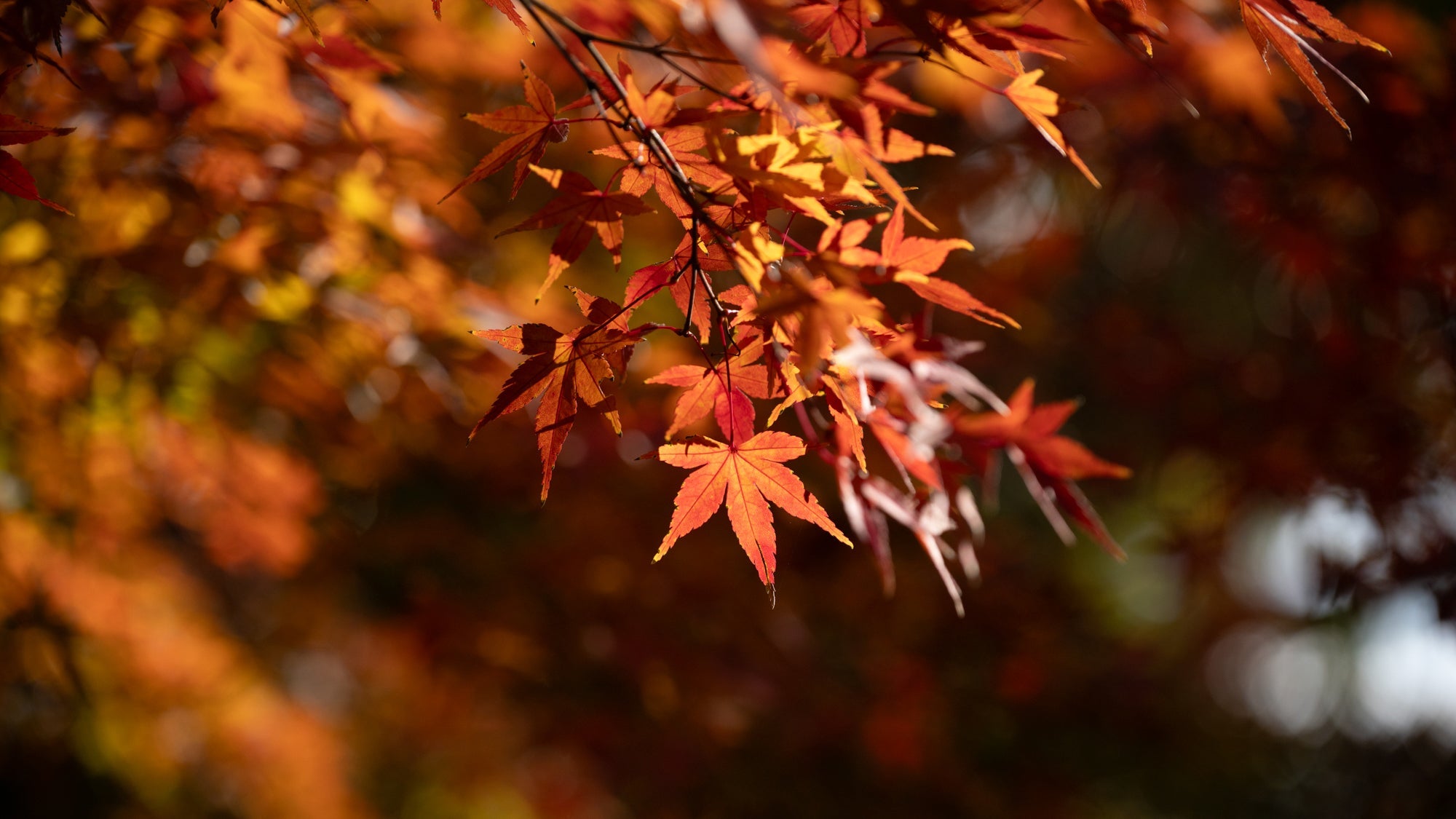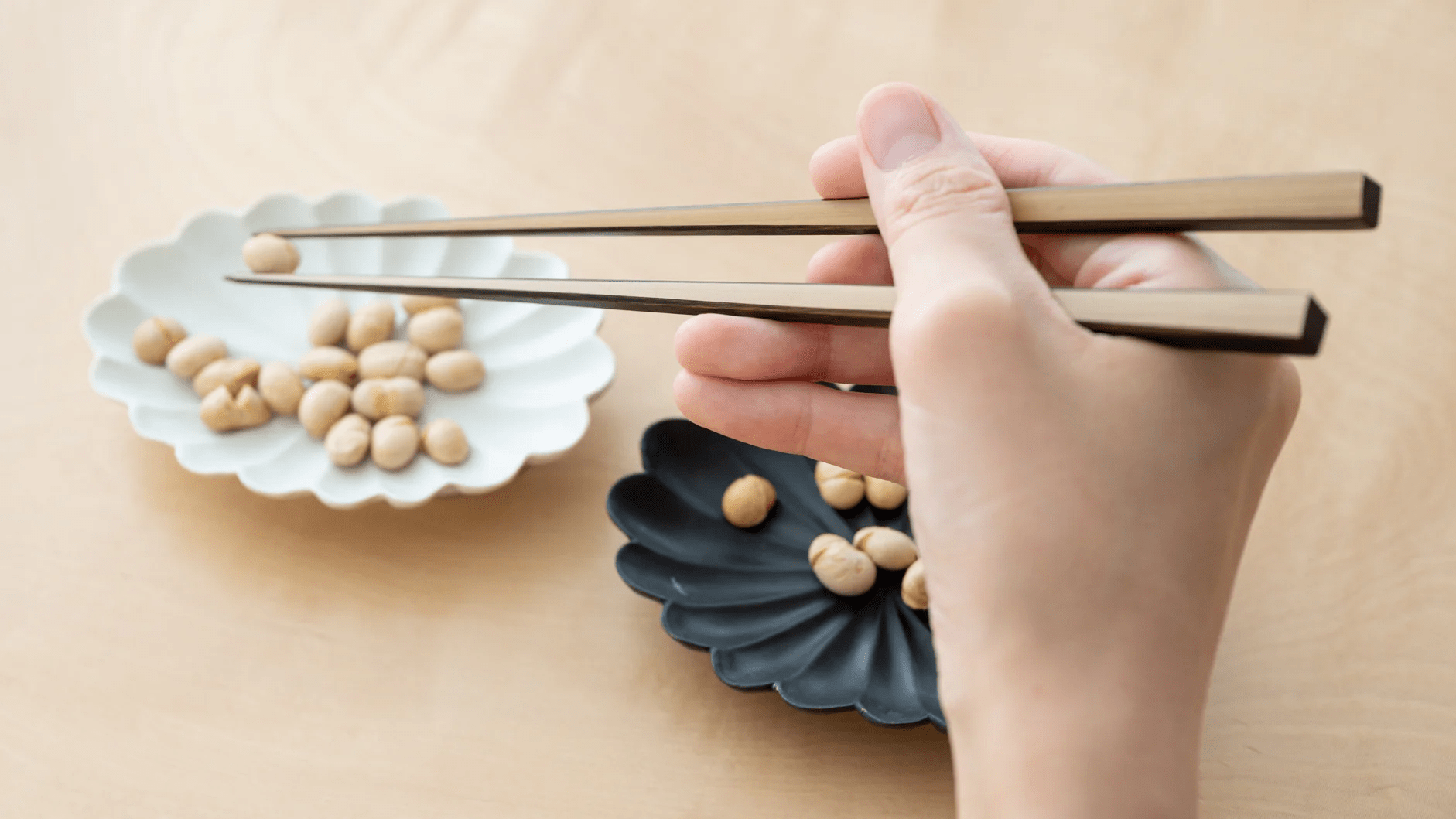
Autumn’s Charm: A Guide to Enjoying Japan's Red Maple Trees
Written by Team MUSUBI
As autumn descends upon Japan, the landscape transforms into a breathtaking tapestry of vibrant red, orange, and gold. The iconic Japanese maple trees, or momiji, begin to shed their summer greens, revealing an explosion of crimson hues that blanket mountainsides, temples, and gardens. During this beautiful time of year, people in Japan take part in momiji-gari, the time-honored practice of admiring autumn foliage. This tradition has long been cherished in Japan, attracting visitors from around the world to witness nature’s breathtaking masterpiece.
In this blog, we’ll guide you through the Edo-Tokyo Open Air Architectural Museum to experience Japan’s breathtaking autumn scenery in Tokyo, offering insights on how to fully enjoy the vibrant colors and peaceful atmosphere, making your seasonal journey even more memorable.
table of contents
Maple Leaves in Japan

When does autumn truly begin?
Perhaps it starts with the gradual fading of green from the leaves, marking the quiet arrival of a new season. The captivating red of maple leaves, a quintessential symbol of autumn, is more than a simple color change—it’s a stunning masterpiece crafted by nature. Like an artist with impeccable timing, nature adorns the trees with fiery hues at just the right moment, transforming the landscape into a vibrant tapestry. This red is not merely a sign of the changing seasons but also a reflection of the profound intelligence embedded in plant life.

As the temperature drops in autumn, chlorophyll in the leaves begins to break down, and at the same time, a pigment called anthocyanin is produced, giving the leaves their brilliant red color. This transformation serves a purpose beyond beauty. The red pigments protect the leaves from excessive sunlight and assist in channeling nutrients back into the tree trunk, helping the plant prepare for the winter months. Each red leaf is a testament to the delicate balance between nature and environment. As the leaves fall gracefully to the ground, they seem to narrate a story of life’s cyclical nature, adding poetic beauty to the season.

In Japan, the arrival of autumn sees the cities and countryside transformed into landscapes painted in shades of gold and crimson. Even a simple walk down the street becomes a moment to appreciate the serene beauty of the season, as the maple leaves reflect the quiet charm of change. Much like hanami in spring, when people gather to admire the cherry blossoms, autumn brings momiji-gari, a cherished tradition in Japan. Literally meaning “hunting red leaves,” this activity involves venturing into the mountains or countryside to seek out and admire the vibrant autumn foliage.

The history of momiji-gari stretches back to the Nara period (710–794 CE), but it was during the Heian period (794–1185 CE) that it became especially popular among the aristocracy. For the nobility of that era, momiji-gari was an elegant pastime, involving excursions into the mountains to view the crimson leaves, accompanied by banquets and the composition of poetry inspired by the season’s fleeting beauty. By the Kamakura period (1185–1333 CE), the appreciation of red leaves had grown into a broader cultural practice. People would not only admire the foliage but also collect particularly beautiful fallen leaves as keepsakes, treasuring them as mementos of the season’s splendor.


During the Edo period (1603–1868 CE), momiji-gari became a tradition enjoyed by the common people. Residents of Edo, now Tokyo, would leave the crowded city and travel to the serene outskirts to marvel at the autumn landscapes. There, they could immerse themselves in the tranquility of nature, finding joy and relaxation among the vivid foliage.
One of the reasons Japan’s autumn foliage captivates so many is the incredible diversity of its scenic beauty. Majestic mountains and deep valleys burst into a fiery symphony of red, creating breathtaking views. Ancient shrines and temples, adorned with crimson leaves, exude an aura of timeless elegance. Lakes surrounded by vibrant trees reflect the dazzling colors, offering a sense of serene beauty. Soaking in a tranquil open-air hot spring, enveloped by the warmth of soothing waters while gazing at mountains draped in vibrant autumn foliage, is an unforgettable experience that offers unparalleled relaxation for both body and soul.

This rich variety of settings makes leaf-viewing in Japan more than just a feast for the eyes—it’s an immersive journey for the soul. The beauty of Japan’s autumn leaves lies not only in their brilliant colors but also in their harmony with the surrounding landscapes and cultural traditions. Each encounter with these vibrant displays becomes a treasured memory, leaving visitors with a deep appreciation for the fleeting yet profound beauty of the season.
Momiji-gari with MUSUBI KILN

This year, we chose the Edo-Tokyo Open Air Architectural Museum, located in Koganei City, Tokyo, as the destination for our momiji-gari adventure. The museum features thirty meticulously restored historical buildings, spanning from the Edo period to the mid-Showa era (1926–1989 CE), each carrying immense historical significance. Strolling through the grounds, we were greeted by the vibrant hues of fiery red maple leaves beautifully adorning the timeless architecture. It felt as though we had been transported to another era, with the gentle breeze brushing against our cheeks, carrying a wistful whisper of the Edo period—soft, nostalgic, and utterly enchanting.

The buildings within the museum are more than mere structures; they are silent witnesses to Japan's evolving lifestyles and cultural narratives. Walking through this space, one cannot help but reflect on the passage of time and the profound layers of history preserved within these walls. The vivid beauty of the autumn foliage harmonized perfectly with the serene elegance of the historic architecture. This union of nature’s liveliness and humanity’s heritage created a unique poetry, infusing our momiji-gari experience with an unmatched sense of romance and wonder.

The entire museum is divided into three sections stretching from west to east: the West Zone, Center Zone, and East Zone. We explored them in order, starting from the West Zone.
The first sight to greet us was the house of the leader of the Hachioji guards, built in the late Edo period. Its low, thatched roof and rustic wooden structure blended harmoniously with the vibrant red leaves glowing in the sunlight outside. Inside, the house preserved everyday tools and furnishings from the era, while sunbeams streaming into the corridor brought the past vividly to life.

Standing there, it was easy to imagine people of that time sitting under the warm autumn sun, admiring the fiery colors of the leaves, much as we were. It was a poignant moment, a tangible connection to lives once lived, and a reminder of the beauty and impermanence of time.

As we made our way from the West Zone to the Center Zone, we passed by the Jisho-in Mausoleum (Otama-ya), a temple built by Princess Chiyo, daughter of Tokugawa Iemitsu—the third shogun of the Edo shogunate—to honor her mother. Along the way, a cluster of maple trees caught our attention and made us pause in awe. These were Omomiji maples, their leaves showcasing a breathtaking mix of red and yellow hues. The red tree blazed like a torch, while the yellow one seemed to be cloaked in golden sunlight. Bathed in the soft autumn light, their beauty felt almost divine, as if nature itself had imbued them with a sacred glow.



Eager with anticipation, we made our way to the East Zone, where several buildings are said to have inspired iconic scenes from Studio Ghibli's masterpiece Spirited Away.
The area is laid out like a charming little street, lined with various shops that tell stories of bygone eras. Among them, we marveled at the tailor’s workshop from 1879; “Kodera” Soy Sauce Shop, built in 1933; and “Hanaichi” Flower Shop, dating back to 1927. Each building captivated us with its unique character and history.

One particularly striking sight was “Maruni Shoten” Kitchenware Store, with its entire facade showcasing the natural greenish-blue hue of copper. Through the bright display windows, we could see an array of traditional kitchenware neatly arranged. These timeless items seemed to carry the weight of the past, and as sunlight danced across their surfaces, it felt as though we had been transported back to that era, witnessing life as it once was.



Another highlight that left us in awe was Bar “Kagiya”. This charming venue features not only a bar counter but also private rooms, offering a glimpse into the nightlife of a past era.

The bar counter was meticulously arranged with a variety of Japanese sake, and vintage posters and advertisements adorned the walls. Standing there, it was easy to imagine the lively chatter and laughter of people from that time, as if their voices still lingered in the air, bringing history vividly to life.


Another must-see attraction is the Public Bathhouse “Kodakara-yu”, built in 1912, it is believed to have inspired Studio Ghibli's acclaimed masterpiece, Spirited Away. This magnificent structure features a grand karahafu gabled roof reminiscent of shrines and temples, with intricate carvings of the Seven Lucky Gods adorning its entrance.

Inside, the bathhouse is divided into male and female sections, both well-equipped with facilities that reflect the bathing culture of the time. Adding to its charm, a beautifully painted mural of Mount Fuji graces the walls.



As the day drew to a close, our journey through the Edo-Tokyo Open Air Architectural Museum left us with a deep appreciation for the harmonious blend of Japan's historical legacy and natural beauty. The vibrant maple leaves paired with the timeless architecture created an experience that was both visually stunning and emotionally profound.
Momiji-gari is more than a seasonal activity; it is a celebration of Japan’s deep connection to nature and the cultural richness of its past.
Edo-Tokyo Open Air Architectural Museum
3-7-1 Sakuracho, Koganei-shi, Tokyo (inside Koganei Park)





























2 comments
@Judith Wright- Thank you so much for your kind words! We’re delighted that you found the article both charming and informative. We truly appreciate your support and look forward to bringing you more insights into Japan. Thank you again!
Team Musubi
This was absolutely charming and informative. It gives you a wonderful view into Japan and its history. I love reading these. Thank you
Judith Wright
Leave a comment
This site is protected by hCaptcha and the hCaptcha Privacy Policy and Terms of Service apply.